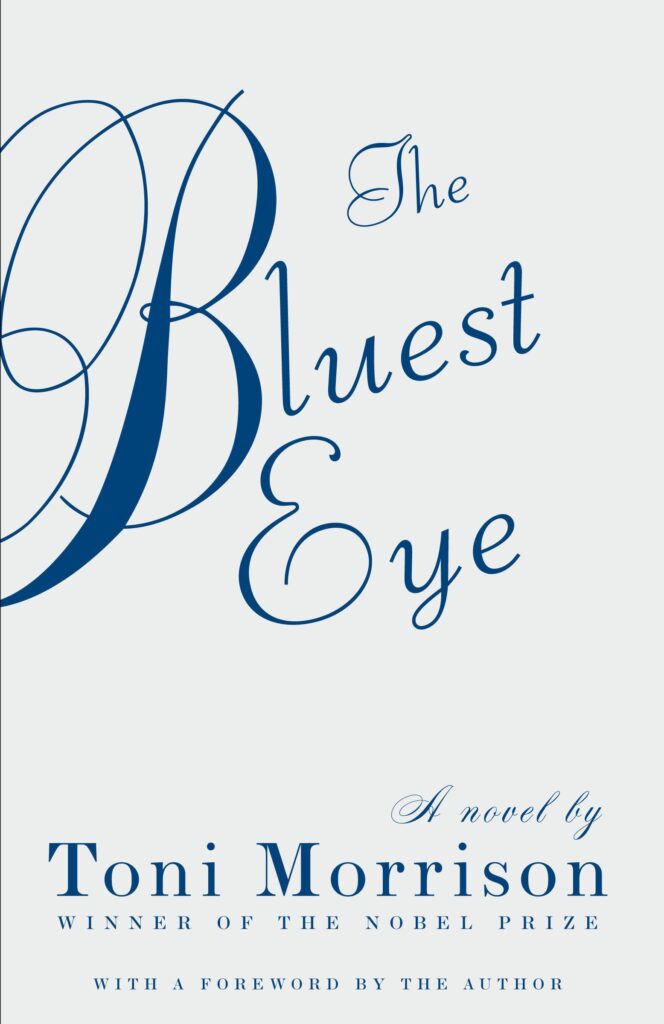
Some stories escape their book covers; for me, The Bluest Eye is one of them.
The premise follows an adolescent girl in the 1940s, Pecola Breedlove, who subconsciously craves the belonging, privilege, and adoration granted to little white girls. Thus, she intuitively desires blue eyes–really, desiring the affection of bullying peers, the favor of her abusive parents, the classification of “beautiful,” and the relief from society’s (and consequently, her own) repulsion at her Blackness.
Recipient of the Nobel Prize in Literature, Toni Morrison certainly does not require any of my praise as validation; however, I bear personal inspiration from her noteworthy writing style. Studying English, I have read shorter works by her in classes before, but I selected this novel of my own accord, and it quickly absorbed my attention. Even when my brain felt exhausted after hours of assigned readings, I could hardly wait to spend my free time reading more if it meant learning from Morrison’s challenging and riveting work.
Morrison writes life masterfully in this novel. I am both cognizant and affirming of the generality of this statement. She tackles mature adult themes, primarily from the perspective of a vulnerable young girl; she exposes profound truths about Black American experience; she writes taboos in female experience with bold honesty. She makes the day-to-day noteworthy, not shying from details for fear of boredom or offense, and embeds those details within a near palpable Ohio setting. The novel primarily takes place during a single formative year, alluding to each of the four seasons.
Rather than writing a smoothly outlined plot, Morrison employs a dynamic, fragmented writing style. First-person narration alternates with third-person, plot events pause for elongated character descriptions, and chronology rewinds to contextualize characters’ pasts. Thus, Morrison exercises creative freedom to present a sort of puzzle format. While reading, I was never quite anticipating a resolution; it was unclear how the plot would progress, and at times, it even felt static. That is the power of this book: the enticement to read does not rely on an expected conclusion; rather, it stems from the literary richness present in each page.
This novel simultaneously coaxes you to read more, turn another page, start another chapter–while also demanding that you read slower, marinating in each sentence, laboring under the emotional weight. You cannot devour the book whole; you cannot glaze over its paragraphs because each proves worthwhile by design.
In fact, that is how I would classify this novel: worthwhile. It is not lighthearted, comfortable, or easy to consume, at times describing harrowing occurrences (trigger warning: domestic and sexual abuse). However, it is a moving work that applies relevantly to current society, especially in an American setting, and challenges the reader toward introspection and examination of their social context.
Most of all, The Bluest Eye compels the reader to develop greater empathy– which, in my eyes, is one of the purposes and hallmarks of great literature.
